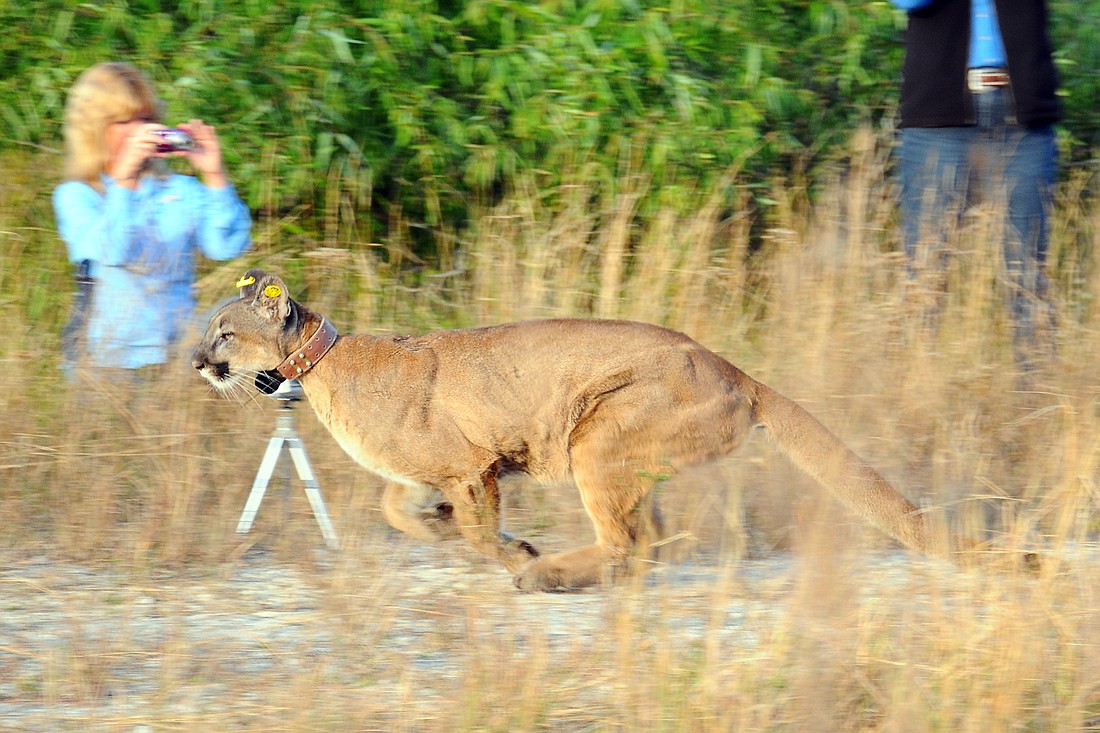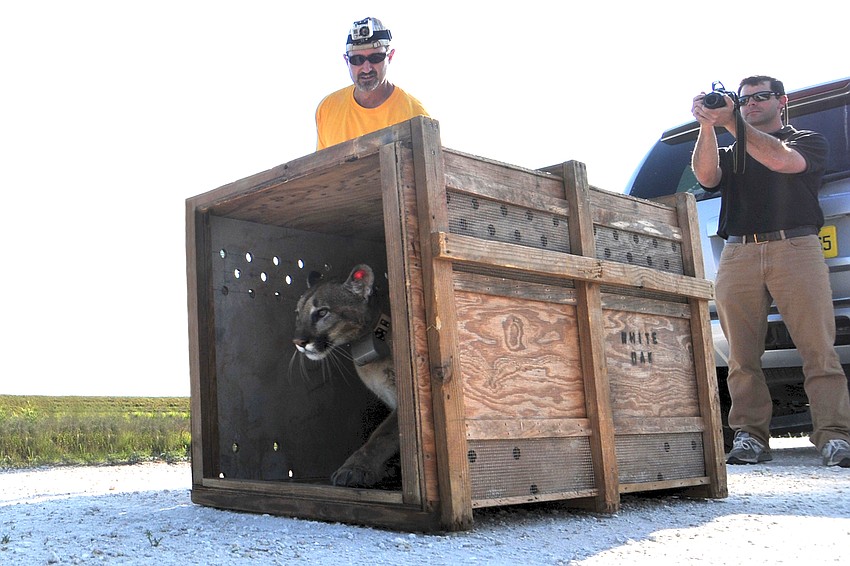- April 29, 2024
-
-
Loading

Loading

It was in January when Manatee County put out a release that noted game-cam sightings of a male panther, an endangered species, moving through the Duette Preserve.
A video of the panther that Manatee County posted on its social media sight was viewed "thousands of times and has been included in numerous news articles on air, online and in print," according to a county press release.
Caught up in the excitement is Sarasota's Bill Samuels, founder of the Florida Panther Project and a historian and panther advocate for more than 30 years.
At 6:30 p.m. March 12, Samuels will be leading the presentation, "Back from the Brink: The Story of the Florida Panther" at the Lakewood Ranch Library. It's a free presentation and all ages are welcome, but those wanting to attend are asked to call 742-4500, ext. 4510, so the proper seating can be arranged. The presentation will last until 7:45 p.m.
Samuels stressed the presentation is not a lecture or a high-tech event. He said an "old-fashioned slide show will be used during much of the presentation, in which he will talk about the history of the Florida panther and possibilities for the future. A question-and-answer period will be available after the presentation.
"We will go over the history of the panther recovery in Florida from the early 1970s, when it was listed as one of the first mammals on the then-new Endangered Species List," Samuels said. "It will be interactive.
"The sighting by Florida Fish and Wildlife is big news. There is a tremendous amount of interest and people are asking questions such as 'Are they breeding in Manatee County?'"

Samuels said Manatee County has had about six documented sightings in the past 18 months. There are many more reported sightings, but he said those are because of what he calls the "Loch Ness Monster syndrome."
He said all the documented sightings are by the Florida Fish and Wildlife Conservation Commission, so "They know they are panthers."
He said he has gotten so many requests for presentations in the past six months that he can't possibly fill them all.
"We do shows, festivals, schools, and fairs," he said. "We have a good time."
He is excited because he said this is the farthest north the panthers have been in 30 years. That does present a problem, though, because he said "It's rural now in (eastern) Manatee County, but we are losing that every day."
Those seeking more information about the Florida Panther Project can go to its Facebook page at Facebook.com/PantherComeback. It displays a Florida Fish and Wildlife Conservation Commission chart that marks documented panther sightings within about a 30-minute drive from Lakewood Ranch, including one in Parrish and three in Myakka.
Samuels, who is called "the Panther Guy" by his fans, only has encountered panthers in the wild on one occasion, and that was bittersweet. He saw two panther kittens near the Corkscrew Swamp in Collier County in 2014.
"Within a month, both were killed crossing the road near the intersection of Immokalee Road and Krape Road, east of Naples.
He is glad his presentations have encouraged kids to follow careers in conservation. One of his favorite stories include a girl who attended a Jacksonville presentation who eventually became a leading wildlife biologist in Georgia.
He remembered the presentation well because there was a lot of hostility related to panthers in Jacksonville.
"They were saying, 'Keep your panthers down south," said Samuels, who is 69.
"But I've never been more encouraged than now," he said. "More people have gotten behind land conservation then ever."
The FFWCC estimates the Florida population of panthers stands about 100 to 160. The numbers had dropped as low as 20 to 30 in 1995.
Florida panthers need from 80 to 200 square miles to thrive. They can cover 20 miles in a day hunting. Their diet consists of deer, wild hob, racoons, armadillos, rabbits and sometimes alligators.